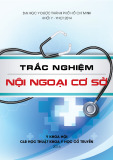
Citation: Venkatesh, G.P.; Kuruvalli,
G.; Syed, K.; Reddy, V.D. An Updated
Review on Probiotic Production and
Applications. Gastroenterol. Insights
2024,15, 221–236. https://doi.org/
10.3390/gastroent15010016
Academic Editors: Ludovico
Abenavoli and Chun Gao
Received: 24 January 2024
Revised: 4 March 2024
Accepted: 8 March 2024
Published: 11 March 2024
Copyright: © 2024 by the authors.
Licensee MDPI, Basel, Switzerland.
This article is an open access article
distributed under the terms and
conditions of the Creative Commons
Attribution (CC BY) license (https://
creativecommons.org/licenses/by/
4.0/).
Review
An Updated Review on Probiotic Production and Applications
Guru Prasad Venkatesh 1,2, Gouthami Kuruvalli 1, Khajamohiddin Syed 3,*and Vaddi Damodara Reddy 1,3,*
1School of Applied Sciences, REVA University, Bangalore 560064, Karnataka, India;
guru88896@gmail.com (G.P.V.); gouthuswami@gmail.com (G.K.)
2Department of Microbiology, Shriram Institute for Industrial Research, Krishnarajapura,
Bangalore 560067, Karnataka, India
3Department of Biochemistry and Microbiology, Faculty of Science, Agriculture and Engineering,
University of Zululand, KwaDlangezwa 3886, South Africa
*Correspondence: syedk@unizulu.ac.za (K.S.); damodara.reddyv@reva.edu.in (V.D.R.);
Tel.: +27-035-902-6857 (K.S.); +91-950-263-9348 (V.D.R.)
Abstract: Microorganisms are ubiquitous and have been exploited for centuries to generate primary
and secondary metabolites essential for human welfare and environmental sustainability. Microorgan-
isms occupy a prominent position in the industrial sector due to their unique properties, such as the
limited time and space required for their growth and proliferation, as well as their easy manipulation
of the genetic material. Among all the microorganisms, probiotics have grabbed the attention of
researchers because of their nonpathogenic nature and immersive application in treating digestive
ailments and vitamin deficiency, boosting immunity, and detoxifying harmful chemicals. Further-
more, probiotics are widely used to treat various diseases such as constipation, colon cancer, type
2 diabetes mellitus, and obesity, as well as a range of intestinal disorders, including inflammatory
bowel disease, among others. The updated information on these diseases and the role of probiotics
has not been updated in the past few years. The present review covers updated information on
the role of probiotics in these topics. The growth of populations around the globe has attracted the
attention of scientists, primarily investigating diverse technologies to meet the gap between probiotic
production and demand. With the support of standardized tools and techniques, researchers have
explored the potent probiotic strains feasible for industrial production and treating health ailments.
In the current review, we have curated the potential information essential for the screening, strain
selection, production, and application necessary for probiotic researchers.
Keywords: probiotics; gut microbiota; lactic acid bacteria; health benefits
1. Introduction
Microorganisms, such as bacteria, fungi, archaea, protists, plankton, and amoebae, are
prevalent in our day-to-day lives. The most recent estimate is that about 38 trillion (10
12
)
microorganisms live in and on human individuals and play a crucial role in stimulating the
immune system, detoxifying potential toxins, and synthesizing vitamins and amino acids
essential for cellular metabolic functions. Among all the genera of microorganisms, Lacto-
bacillus,Bifidobacterium,Escherichia coli,Clostridium,Streptococcus,Peptococcus,Ruminococcus,
Fusobacterium,Bacteroidetes,Actinobacteria,Proteobacteria,Bacteroides, and Eubacterium are
dominant in the regulation of human metabolic homeostasis. Human gut microbiome
diversity and abundance are significantly reduced when exposed to therapeutic leads
like antibiotics, proton pump inhibitors, non-steroidal anti-inflammatory drugs, antacids,
antidepressants, sleeping pills, laxatives, and statins. This is followed by changes in the
metabolic activity of the host gut microbiota [
1
]. The reduction or removal of these micro-
bial flora causes toxic product accumulations that impair cellular processes and prevent
vitamin synthesis, resulting in malnourishment and impairing the host system’s anabolic
and catabolic reactions, which are crucial for the regulation of the biological system. As a re-
sult, there is a growing variety in the market of probiotic-containing foods and supplements.
Gastroenterol. Insights 2024,15, 221–236. https://doi.org/10.3390/gastroent15010016 https://www.mdpi.com/journal/gastroent

Gastroenterol. Insights 2024,15 222
In 2001, the World Health Organization (WHO) and the Food and Agriculture Organization
(FAO) organized an expert meeting that resulted in the definition of probiotics as “live
microorganisms that, when administered in adequate amounts, confer a health benefit on
the host”. Later, in 2014, this definition was modified for grammatical reasons [2].
Probiotics are becoming more and more popular in the healthcare industry, and by
2024, supplement sales are expected to reach USD 35–65 billion. In the 20th century, the field
of probiotic research was investigating new strains of probiotics; however, Nobel laureate
Élie Metchnikoff discovered that adding lactic acid-producing bacteria to dairy products
improved the defense system’s performance and had a greater therapeutic effect on the host
system. A few fermented food product reports stated that Brem [Bali, Indonesia], Rusip
[Indonesia], Kimchi [Korea], Gochujang [Korea], Kefir [Russia], Gundruk [India], Khalpi
[Nepal], Wine [America], Garris [Sudan], Yoghurt [Mesopotamia, Central Asia], and Ergo
[Ethiopia] favor the growth of probiotic genera such as Streptococcus,Enterococcus,Alloiococ-
cus,Aerococcus,Lactococcus,Oenococcus,Vagococcus,Lactobacillus,Carnobacterium,Pediococcus,
Leuconostoc,Tetragenococcus,Weissella,Bifidobacterium,Symbiobacterium, and Atopobium [1].
Regarding the outcome of the probiotics research, a couple of guidelines about efficient
strain design and development were introduced in the 1980s. As per these guidelines,
therapeutic probiotics must meet all the following criteria: (a) strains must show a symbiotic,
therapeutic effect; (b) they must be non-immunogenic and non-pathogenic; (c) strains
should be compatible with the host system’s microbial environment, and be adaptable
in the host system by keeping their variability; (d) strains should protect the healthy
environment of the gut microbial flora; (e) during production, formulation, and storage,
strains must be stable in their metabolic activities [
2
]. By keeping the standard guidelines,
researchers explored the health benefits of potent probiotic strains ranging from gene to
species level to avoid species-level variation effects in the treatment process. With the
existing literature, tools, and technologies, probiotic researchers conducted experiments on
human and animal models to prove the clinical potential and efficacy of various probiotic
strains against numerous health ailments. The potential studies and clinically reported data
confirmed that the probiotic strains are feasible for treating diarrhea, lactose intolerance,
antimicrobial therapy, and anti-colorectal cancer activities. It was also reported that a few
strains are also involved in reducing irritable bowel conditions and inflammations in the
gut of the host system [3,4].
Selecting clinically important probiotic organisms with high durability is very crucial;
previous reviews focused on any one of the probiotics and their applications. In this review
we have broadly emphasized different probiotics and their applications, beginning with the
screening, characterization, production, and application studies (with suitable examples).
We also summarized recent findings for probiotic strain selection and the determination of
their viability, production, and applications, which are essential for probiotic researchers in
finding novel therapeutic probiotic strains.
2. Probiotic Strain Selection Criteria and Requirements
To meet the clinical requirements, EFSA (European Food Safety Authority), WHO,
and FAO issued mandatory guidelines to probiotic researchers, stating that the strains
must meet safety and functionality requirements, such as the route of strain selection,
nonpathogenic, non-immunogenic nature, resistance to antibiotics, long durability in
the gastrointestinal tract, and the ability to maintain their activity during production,
processing, and preservation, which are crucial for patient safety [
5
,
6
]. The carriers or
matrix employed in the formulation are also vital since they can impair the strain’s viability,
lowering the product’s quality [
7
,
8
]. The following critical factors are tested during the
initial screening and selection of probiotics:
•Stability of phenotypes and genotypes, including plasmid stability;
•Tolerance to bile and acid, as well as survival and growth;
•The adhesion characteristics of intestinal epithelial cells;
•Antimicrobial compound production;

Gastroenterol. Insights 2024,15 223
•Patterns of antibiotic resistance;
•Inhibition of known gut pathogens;
•Immunogenicity, spoilage organisms, or both.
2.1. Probiotics with the Best Characterization: In Health Point
Before denoting beneficial microorganisms as probiotics, most culturable microbiota
are promoted in fermented food products for their health-promoting activities (Figure 1).
Among all the culturable microorganisms, lactic acid bacteria (LAB), used in yogurt, cheese,
and pickles, attained a prominent position as the best probiotic supplement due to its unique
properties (as mentioned by EFSA) and lack of lipopolysaccharides (LPS) and harmful
extracellular proteases. During the research for efficient probiotics, researchers reported
that Lactococcus and Streptococcus are predominant in the human ileum and jejunum, as well
as, at lower densities, in the colon. This symbiotic relationship raised researchers’ attention
to the molecular mechanisms that make these strains suitable for treating intestine-related
ailments. With the advent of sophisticated technology, researchers found that these strains
colonized the intestine for a limited time by releasing primary and secondary metabolites
extracellularly without trapping them in the periplasm. This indigenous property prompted
the researchers to develop engineered therapeutic probiotics, keeping Lactobacillus strains
as reference strains to deliver molecules directly to the mucosa without any drawbacks or
adverse effects on systemic distribution [9].
Gastroenterol. Insights 2024, 15, FOR PEER REVIEW 3
• Stability of phenotypes and genotypes, including plasmid stability;
• Tolerance to bile and acid, as well as survival and growth;
• The adhesion characteristics of intestinal epithelial cells;
• Antimicrobial compound production;
• Patterns of antibiotic resistance;
• Inhibition of known gut pathogens;
• Immunogenicity, spoilage organisms, or both.
2.1. Probiotics with the Best Characterization: In Health Point
Before denoting beneficial microorganisms as probiotics, most culturable microbiota
are promoted in fermented food products for their health-promoting activities (Figure 1).
Among all the culturable microorganisms, lactic acid bacteria (LAB), used in yogurt,
cheese, and pickles, attained a prominent position as the best probiotic supplement due
to its unique properties (as mentioned by EFSA) and lack of lipopolysaccharides (LPS)
and harmful extracellular proteases. During the research for efficient probiotics, research-
ers reported that Lactococcus and Streptococcus are predominant in the human ileum and
jejunum, as well as, at lower densities, in the colon. This symbiotic relationship raised
researchers’ attention to the molecular mechanisms that make these strains suitable for
treating intestine-related ailments. With the advent of sophisticated technology, research-
ers found that these strains colonized the intestine for a limited time by releasing primary
and secondary metabolites extracellularly without trapping them in the periplasm. This
indigenous property prompted the researchers to develop engineered therapeutic probi-
otics, keeping Lactobacillus strains as reference strains to deliver molecules directly to the
mucosa without any drawbacks or adverse effects on systemic distribution [9].
Figure 1. Factors that influence the viability of probiotics in foods and the gastrointestinal system.
2.2. Probiotic Viability: What Factors Affect It?
To make the therapeutic formulation, it is also essential to consider the physiochem-
ical parameters associated with the food products that influence the probiotic viability
and functionality during production and preservation [Figure 1]. Intrinsic product param-
eters such as pH, salt, oxygen concentration, water, sugar content, and other elements
such as fermentation settings and microbiological parameters, are among these factors
[10]. On an industrial scale, including probiotics in meals poses several microbiological,
technological, and economic problems.
Figure 1. Factors that influence the viability of probiotics in foods and the gastrointestinal system.
2.2. Probiotic Viability: What Factors Affect It?
To make the therapeutic formulation, it is also essential to consider the physiochemical
parameters associated with the food products that influence the probiotic viability and
functionality during production and preservation [Figure 1]. Intrinsic product parameters
such as pH, salt, oxygen concentration, water, sugar content, and other elements such as
fermentation settings and microbiological parameters, are among these factors [
10
]. On an
industrial scale, including probiotics in meals poses several microbiological, technological,
and economic problems.

Gastroenterol. Insights 2024,15 224
Based on previous studies, the encapsulation of probiotics enhanced the cell viability
of yogurt samples. Multilayer emulsion was an effective tool in preserving the viability of
bacteria at the recommended effectiveness level [
11
,
12
]. Probiotic bacteria encapsulation
is an emerging technology that facilitates the incorporation and protection of efficient
strains in functional foods to meet therapeutic needs. Nonetheless, certain probiotic
viability enhancement technologies, like microencapsulation, increase the cost of food
manufacturing. To minimize the cost and meet the demands in the globalized market
for functional products, it is necessary to explore inexpensive technologies to keep the
product cost within accessible limits. The identification of appropriate bacterial strains,
as well as the microencapsulation materials and technique, are significant problems that
must be addressed further. The effectiveness, durability, and ecological acceptability of the
microencapsulation techniques employed are crucial. Implementing microencapsulation
on an industrial scale is hampered by several issues [
13
,
14
]. Different microencapsulation
technologies have not been fully utilized yet and require more testing before they can be
deployed correctly in real food matrices.
Microencapsulation industries are facing technological difficulties in maintaining
optimistic, higher-beneficial-value goods. In this situation, the food industry will need
additional resources and skills to successfully present the most innovative technologies
to develop the next generation of food products [
15
]. To enhance the viability of probiotic
strains during processing and preservation, and to overcome the adverse gastric conditions
in the gastrointestinal system, extensive research should be conducted, providing appropri-
ate technologies for microbial strain screening and encapsulation matrixes involved in the
protection of probiotics in gastric conditions.
2.3. Physicians’ Guidance
In microbiome research, the discovery rate of new organisms with therapeutic potential
for the human host is rapidly growing. Some microbial strains with systemic immunomod-
ulatory functions are being studied in new ways [
16
], including food allergy diagnosis and
treatment [
17
,
18
], regulation of the gastrointestinal–liver axis [
19
], neuroactive metabolite
synthesis [
20
], and in regard to their antimicrobial action in the gastrointestinal system,
skin, and urogenital tract [
21
]. Furthermore, microorganisms are increasingly recognized as
being crucial to various metabolic functions [Figure 2] [
22
]. New microbial-based therapies
will develop as a result of these discoveries, and physicians should review the following
parameters before considering these strains for therapeutic applications:
•
Evidence that the strains were tested in a randomized, controlled, or comparable
human experiment and categorized based on specific host or microbial genetic charac-
teristics in a varied population.
•In the product, the dose and viability are the same as in the human experiment.
•
There is whole-genome strain characterization and precise strain designation available.
However, many fundamental metabolic activities are maintained among individuals in
a community, according to human microbiome research. Despite substantial interpersonal
variability at the species level, many essential metabolic activities are carried out among
individuals in a population [
5
]. As the subject of personalized medicine grows in popularity,
proponents of personalized therapies must explicitly identify the foundation for group
separation and validate the efficacy of the proposed sophisticated treatment in the targeted
subpopulation [
23
]. The discovery and validation of microorganisms having significant
and repeatable impacts across a varied population would be a more general strategy [
24
].
If the influence on human health is established in a controlled human study, therapies in a
stratified and diverse population would meet the probiotic recommendations [22].

Gastroenterol. Insights 2024,15 225
Gastroenterol. Insights 2024, 15, FOR PEER REVIEW 5
Figure 2. Physiological and metabolic processes in human microbiome.
However, many fundamental metabolic activities are maintained among individuals
in a community, according to human microbiome research. Despite substantial interper-
sonal variability at the species level, many essential metabolic activities are carried out
among individuals in a population [5]. As the subject of personalized medicine grows in
popularity, proponents of personalized therapies must explicitly identify the foundation
for group separation and validate the efficacy of the proposed sophisticated treatment in
the targeted subpopulation [23]. The discovery and validation of microorganisms having
significant and repeatable impacts across a varied population would be a more general
strategy [24]. If the influence on human health is established in a controlled human study,
therapies in a stratified and diverse population would meet the probiotic recommenda-
tions [22].
2.4. Dairy Starter Cultures of Probiotic for Manufacturing
With the available knowledge to get rid of any microbial-associated ailments, cus-
tomers seek probiotic-supplemented dietary and dairy products. One such traditional
dairy product is yogurt. Yogurts are made with Lactobacillus bulgaricus and Streptococcus
thermophilus starter cultures, and they have become very popular among consumers as
nutritious foods. Yogurt cultures are generally acknowledged to have been designated as
probiotics because of their advantageous impacts on human health. Popović et al. charac-
terized the functional yogurt starter cultures of the autochthonous strains S. thermophilus
BGKMJ1-36 and L. bulgaricus BGVLJ1-21, which were isolated from artisanal sour milk
and yogurt, respectively, and have health-promoting qualities. The strains BGKMJ1-36
and BGVLJ1-21 possess the capacity to hydrolyze αs1-, β-, and κ-casein, form curd after
five hours at 42 °C, and exhibit antibacterial activity against Listeria monocytogenes. The
strain BGKMJ1-36 generates exopolysaccharides that are crucial to the yogurt’s rheologi-
cal characteristics. The strains of BGVLJ1-21 and BGKMJ1-36 colonies passed through the
yogurt’s simulated gastrointestinal system [25]. In manufacturing, the targeted probiotic-
supplemented product should have efficient and viable cells that can sustain the adverse
condition, be stable, and work consistently in the various treatments [26]. Customers an-
ticipate a product with a high count and long-lasting viability across a wide range of
Figure 2. Physiological and metabolic processes in human microbiome.
2.4. Dairy Starter Cultures of Probiotic for Manufacturing
With the available knowledge to get rid of any microbial-associated ailments, cus-
tomers seek probiotic-supplemented dietary and dairy products. One such traditional
dairy product is yogurt. Yogurts are made with Lactobacillus bulgaricus and Streptococcus
thermophilus starter cultures, and they have become very popular among consumers as
nutritious foods. Yogurt cultures are generally acknowledged to have been designated as
probiotics because of their advantageous impacts on human health. Popovi´c et al. charac-
terized the functional yogurt starter cultures of the autochthonous strains S. thermophilus
BGKMJ1-36 and L. bulgaricus BGVLJ1-21, which were isolated from artisanal sour milk
and yogurt, respectively, and have health-promoting qualities. The strains BGKMJ1-36
and BGVLJ1-21 possess the capacity to hydrolyze
α
s1-,
β
-, and
κ
-casein, form curd after
five hours at 42
◦
C, and exhibit antibacterial activity against Listeria monocytogenes. The
strain BGKMJ1-36 generates exopolysaccharides that are crucial to the yogurt’s rheological
characteristics. The strains of BGVLJ1-21 and BGKMJ1-36 colonies passed through the
yogurt’s simulated gastrointestinal system [
25
]. In manufacturing, the targeted probiotic-
supplemented product should have efficient and viable cells that can sustain the adverse
condition, be stable, and work consistently in the various treatments [
26
]. Customers
anticipate a product with a high count and long-lasting viability across a wide range of
ambient humidity and temperatures, and so stretching on a high-quality functional food
supplement should be considered in clinical research [
27
]. On the other hand, customers
want quick and efficient strains involved in the rapid acidification of milk and milk prod-
ucts for more therapeutic benefits. The process methodologies are briefly detailed in the
production process, and critical problems for manufacturing and troubleshooting uniform
product performance are highlighted.
2.5. Production and Strains Development
It is critical to scale up to an intermediate level in the pilot to evaluate and mitigate
these more typical production conditions before moving to economical assembly. Freeze-
drying methodologies must be regularly assessed before formulation, from prototype to
commercial production. The probiotic dose levels used in the final product should be based
on those proven to be effective in human trials. Colony-forming units per gram of product

![Bộ câu hỏi trắc nghiệm môn Vi sinh vật [mới nhất]](https://cdn.tailieu.vn/images/document/thumbnail/2025/20251113/kimphuong1001/135x160/64181763025328.jpg)
![Bộ câu hỏi trắc nghiệm Vi sinh [năm] mới nhất](https://cdn.tailieu.vn/images/document/thumbnail/2025/20251113/kimphuong1001/135x160/72591763025328.jpg)








![Tài liệu Triệu chứng học nội khoa [mới nhất]](https://cdn.tailieu.vn/images/document/thumbnail/2025/20251204/oanhlahet@gmail.com/135x160/5231764900514.jpg)


![Bài giảng Vi sinh vật: Đại cương về miễn dịch và ứng dụng [chuẩn nhất]](https://cdn.tailieu.vn/images/document/thumbnail/2025/20251124/royalnguyen223@gmail.com/135x160/49791764038504.jpg)











